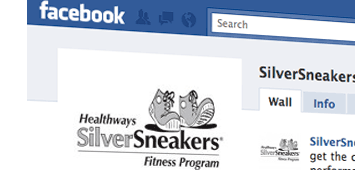The New Face of Experiential Marketing (or Getting Really Social)
Not so long ago, marketers created a bright line between experiential and social marketing. As the Experiential Marketing Forum puts it, “experiential marketing gives customers an opportunity to engage and interact with brands, products, and services in sensory ways that provide the icing on the cake of providing information.” The IAB, on the other hand, describes social media as “creating value that is derived not only from the primary distribution of branded content, but also the additional interactions that result as users share, participate with, and propagate advertising content. In the end, social media adds another layer of value through its ability to engage users and create additional reach.”
Experiential marketing was personal, intimate, REAL. And social media marketing was networked, collaborative and ephemeral. That’s why experiential marketers have used social media the way they used traditional media such as newsprint – to announce upcoming events and to report on activities. And that’s why social media marketers have typically only used events to create awareness and traffic to online sites.
But let’s back up for a minute. Aren’t events, trade shows and in-store promotions the ultimate “social” phenomena? These experiences don’t take place in a vacuum; the “icing on the cake” is really sharing the experience with friends and kindred spirits. And aren’t social networks the ideal way to extend brand engagement and interaction? The definition of “place-based” marketing is undergoing transformation in some very interesting and effective ways. At its very best, the convergence of social media and experiential marketing is maximizing our ability to use consumers as “remarketers.” Here are just a few examples…
 Several years ago, Media Logic began working with SilverSneakers, a fitness program for older adults. As we researched the brand, we discovered that social interaction at the fitness centers was an important benefit of participation for the members. As members became engaged, they were much more likely to renew their memberships when the time arrived. How could we use this information to build retention and encourage usage? We began a disciplined approach to social media for this unlikely group – tweeting and posting health tips, exercise advice and SSFP program information.
Several years ago, Media Logic began working with SilverSneakers, a fitness program for older adults. As we researched the brand, we discovered that social interaction at the fitness centers was an important benefit of participation for the members. As members became engaged, they were much more likely to renew their memberships when the time arrived. How could we use this information to build retention and encourage usage? We began a disciplined approach to social media for this unlikely group – tweeting and posting health tips, exercise advice and SSFP program information.
In a short time, our cadre of followers and “likers” had grown exponentially – sharing their own experiences and tips, encouraging one another and bringing friends and acquaintances into the social fold. But it did much more than that. Because of the online encouragement and support, members began to actively use their SSFP memberships, meeting their online “friends” at their local gyms. One woman even spoke of using the SSFP friend page as her home page so that she would see it every day and be encouraged to head out for her exercise regimen. While it’s too early to judge the impact on member acquisition and retention, we believe that it’s axiomatic that this kind of engagement will lead to a dramatic increase in membership.
At the other end of the demographic spectrum, the nation’s largest store-based retailer of consumer entertainment products, FYE, has partnered with Media Logic to maximize the value of its entertainment-based content. The program uses social promotions that bolster in-store experiences, events and user-generated content. At the center of the multi-channel effort is the FYE Guy website, a dynamic content hub that allows customers to forge a social connection to FYE by expressing and sharing their personal entertainment interests and experiences through a variety of social media plug-ins and in-store enhancements. By leveraging the engagement power of social media, FYE Guy will give consumers the opportunity to play, share and be part of the brand in a very “sensory” way, while also rewarding loyal customers with coupons and perks via geo-location services such as Foursquare. While still in the “soft launch” phase, the program is already generating significant participation – both online and in-store.
The list goes on. Media Logic is working with Cornell Cooperative Extension to reinvigorate local chapters via a social media celebration of their centennial… we’re connecting people to local bank branches through social “sharing” programs… and we’re helping universities conduct localized alumni programming through innovative Google Maps mashup promotions. As with most of the previously siloed forms and channels of marketing, the merger of social media and experiential marketing has redefined our notions of “social” and of “place,” creating new ways for marketers to attract, engage and motivate consumers.




